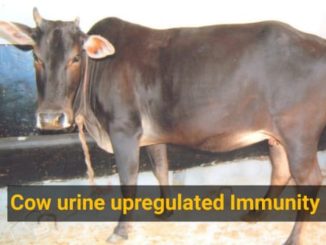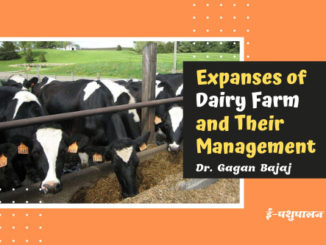Conception rate (CR) is a measure of cow`s fertility at breeding. It is expressed as percentage and calculated by dividing the number of pregnant cows by the total number of insemination in the herd multiplied by 100. Respectable overall rates are 50-55%, and should be highest at first service. Services per conception may be obtained by diving no. of insemination by total no. of pregnancies. The CR at first service is also the indicator of the overall CR because all cows are in this calculation, including problem breeders culled later in their lactation. Conception rates are confounded by such factors as the physiologic fertility of the cows, semen quality, and semen handling and insemination techniques. It is not an easy variable to improve, other than to make sure good quality semen is being properly inserted into a healthy uterus. CR is one of the best indicators of reproduction efficiency of a herd or farm, hence good record keeping is essential.
Factors affecting conception rate
Estrus detection
One of the most important factors that can result in poorly timed insemination and low conception rates is inaccurate estrus detection. This problem usually occurs in herds that breed a large number of cows on the basis of secondary signs of estrus. The result is that many cows are near estrus but bred too early or too late in relation to the time of ovulation. In small scale livestock keeper can detect their estrus cows easily due by visual observation however teaser bull parading has no parallel. There are many signs like: bellowing, restlessness, mounting behavior, swelling of vulva, mucus discharge etc. Among the estrus signs the most important is stand to mount (standing heat) and clear mucus discharge from vulva. Homosexual behavior seen in cattle is rare in buffalo. In Buffalo absence of mounting behavior and scanty mucus discharge limits the heat detection by visual observation and hence teaser bull parading is most reliable method for heat detection.
Milk progesterone analysis has been used to study the reproductive status of cows on the day they were inseminated. Progesterone levels are always remain low for 5-6 days around the day of estrus with lowest values at breeding. When progesterone levels are high in milk samples obtained on the day of breeding the cow is not in estrus and insemination is likely to fail in the absence of ovulation.
Timing of Insemination
For maximum conception rate, cows should be bred at a time that will ensure that healthy, live sperm are present at the site of fertilization when the unfertilized egg arrives. Thus, to accurately “time” the insemination one needs to predict when ovulation will occur. Standing behavior is the most reliable sign for predicting when cows will ovulate and, therefore, when they should be inseminated. This is based on the fact that ovulation occurs 24 to 30 hours after the animal first stands to be mounted. The animal should be bred after 12 hrs of beginning of standing heat (mid to late estrus) for maximum conception rates i.e. AM-PM schedule must be followed for insemination.
Insemination Technique
Faulty insemination technique is a major factor causing low conception rate in many herds. Correct semen placement is critical. The major difference between AI technicians with high conception rates and those with low rates is semen placement. Conception rate is 10% higher for semen deposited in the body of uterus as compared to intra-cervical insemination. Insemination hygiene is of paramount importance.
Semen Quality
To maximize conception rate, high quality semen must be placed in the cow`s reproductive tract. Semen quality at the time of breeding is dependent on the quality of semen at the time it was produced/ purchased, storage conditions, thawing procedure and handling techniques.
Thawing
Frozen semen is essential to thaw before practicing AI to bring it on body temperature from ulta low temperature. Semen should be thawed at a temperature 37°C for 30 seconds in water.
Milk Production
Conception rate may decrease with the increase of milk production though controversial reports are available in literature, some suggesting an effect and others no effect. It seems reasonable to conclude that excellent nutritional and reproductive management may effectively compensate for any negative effect that high milk production has on reproduction.
Age
Conception rates are around 10% higher in heifers compared to parous cows and are higher in primiparous cows than that of the older cows attained the 4th or more parities.
Temperament of animal at AI
Temperament of animal during AI period is important and influences the conception rate of animal. Some animal remain docile and some are aggressive during AI period. Viciousness may adversely affect the conception.
Stress
Low conception rates are observed when temperature and humidity are high. Heat stress on the day of breeding and the day after seems to be the cause of the conception failures which may due to fertilization failure or early embryonic mortality. Efforts should be made to reduce the thermal stress during hotter months by providing shade, cold water bath, sufficient green fodder to animal. Similarly during winter months cold shock to sperms after thawing should be avoided by taking extra care, as sperms are more sensitive to temperature shock. Stress related to under-nutrition, transport, disease, overcrowding etc. should be avoided necessarily to ensure timely pregnancy establishment.
Health disorders and post partal complications
In many cows the search for factors causing low conception rates begins in the calving area. Failure to provide a clean environment and (or) failure to practice good hygiene when examining and assisting cows at calving contributes to retained placentas and reproductive tract infections. These disorders slower down the reproductive tract repair processes and could lower conception rates, especially if they do not receive timely and effective treatment. The key to maximizing conception rates lie in the prevention of disorders, rather than treatment on occurrence.
Interval from Calving to Breeding
Conception rates are reduced in cows bred before 50 days after calving. A voluntary waiting period of 50-60 days after calving is recommended.
Summary
Maximum profit by the farmer or livestock owner can only be gained when conception rate of their herd is optimum. Every missed cycle or every failed conception costs not only in economic terms but also in psychological ways. So for improving the conception of our farms, the factors affecting conception rate must be explored. One of the most important factors that can result in poorly timed insemination and low conception rates is inaccurate estrus detection. For maximum conception rate, cows should be bred at a time that will ensure that healthy, live sperm are present at the site of fertilization when the unfertilized egg arrives. Faulty insemination technique is a major factor causing low conception rate in many herds. Use of high quality semen and of appropriate breed must be practiced. Other factors like thawing of semen, age and temperament of animal, milk production, stress level, nutritional and health status, interval from calving to breeding, etc. also play a significant role in deciding the overall conception rate of a herd or farm. Hence these points must be implemented to exploit the maximum potential from the animals and maximize the socio-economic gains.






Be the first to comment